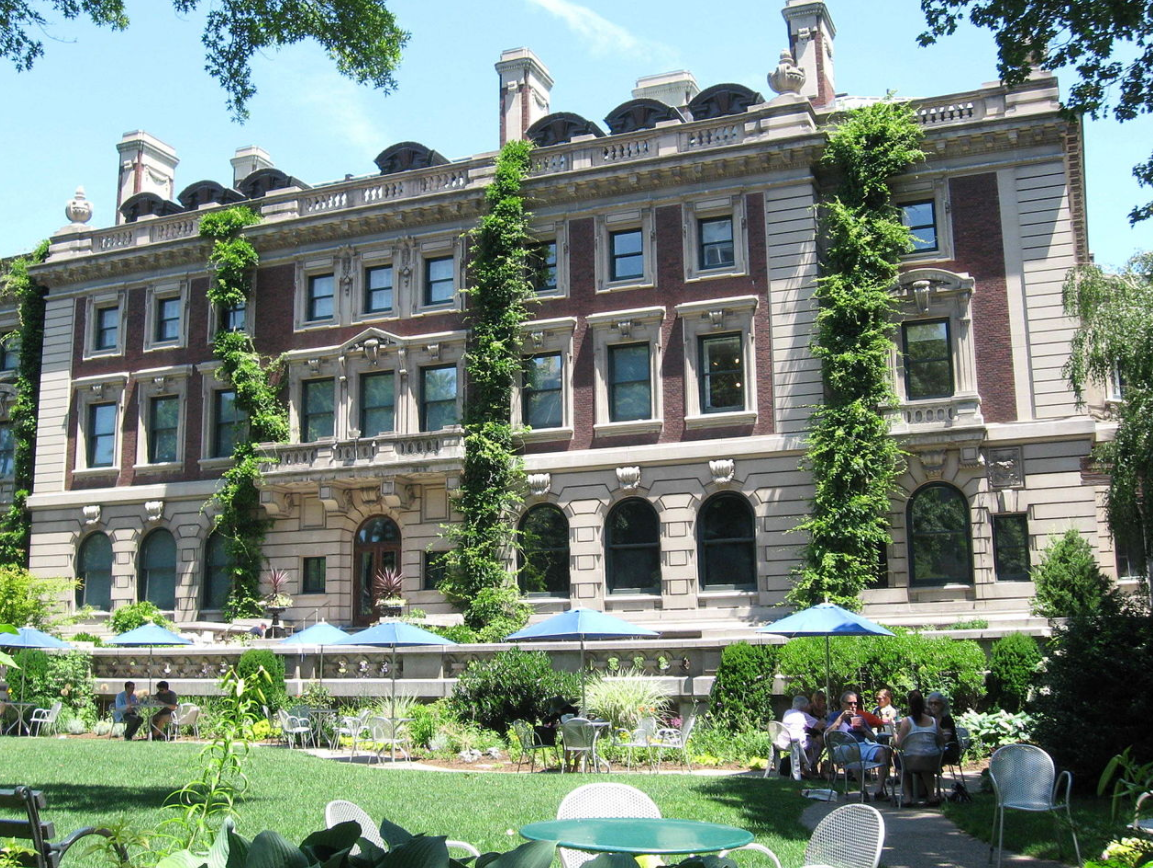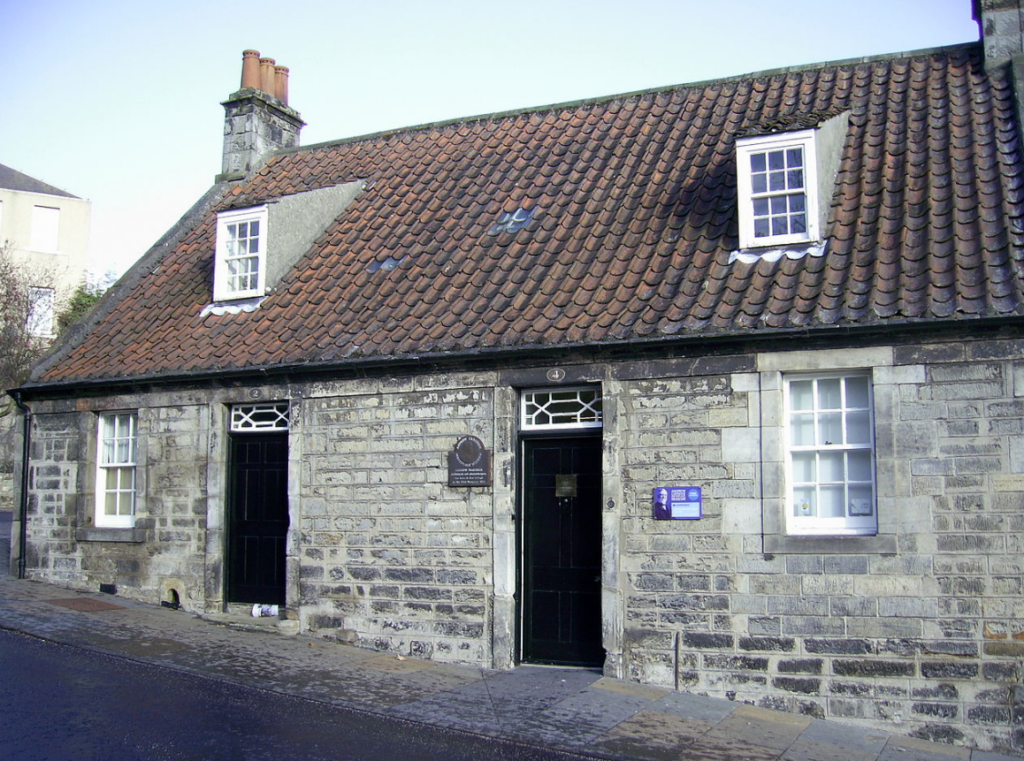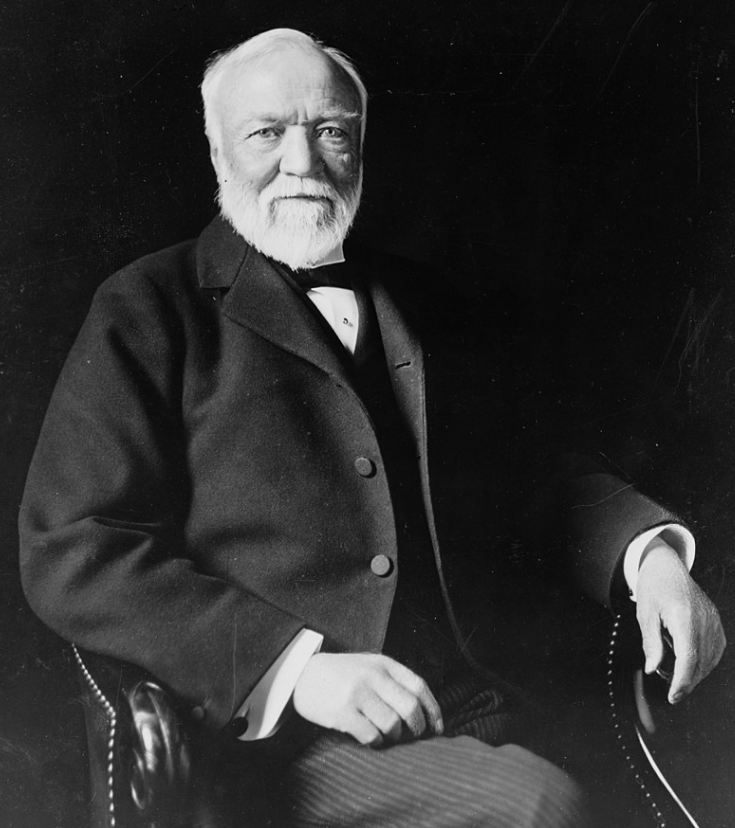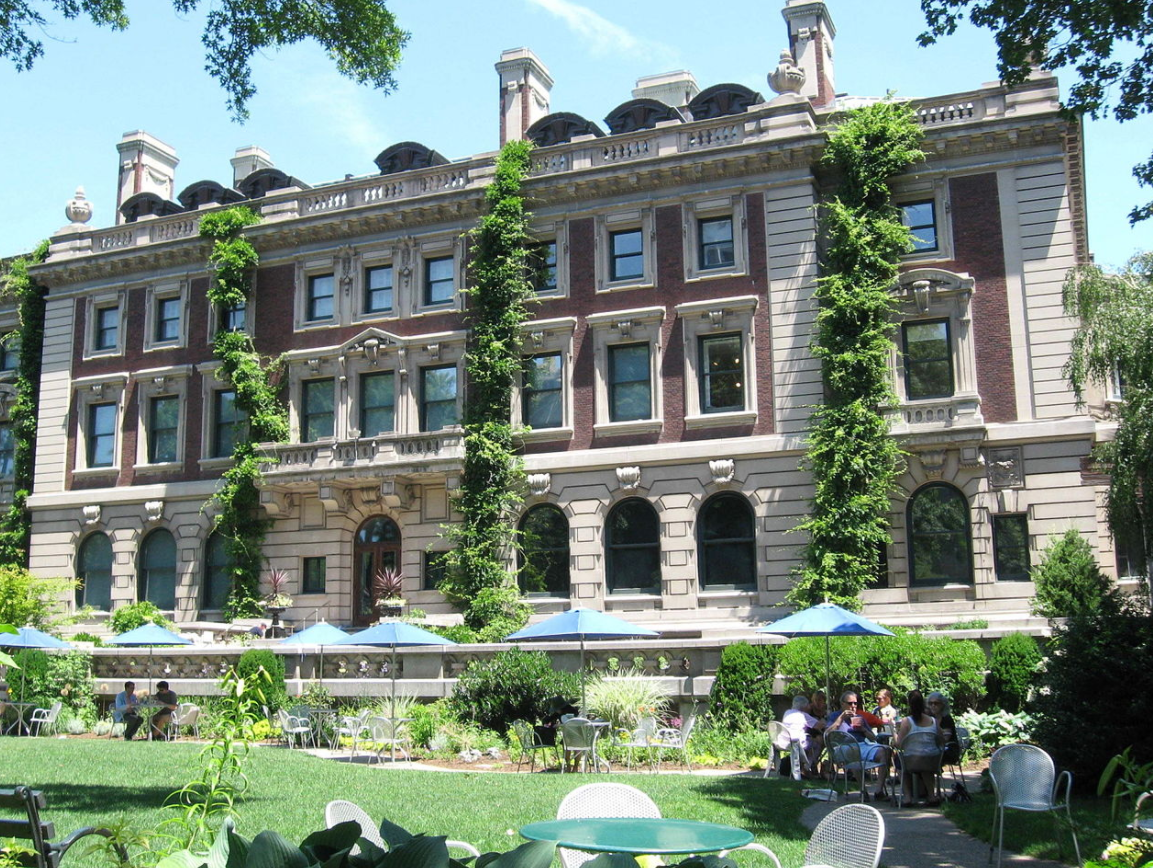
The Andrew Carnegie Mansion is a historic house located at 2 East 91st Street at Fifth Avenue in the Upper East Side of Manhattan, New York City, New York. Andrew Carnegie moved into his newly completed mansion in late 1902 and lived there until his death in 1919; his wife, Louise, continued to live there until her death in 1946. The building is now the Cooper-Hewitt, Smithsonian Design Museum, part of the Smithsonian Institution. The surrounding area, part of the larger Upper East Side neighborhood, has come to be called Carnegie Hill. The mansion was named a National Historic Landmark in 1966.[4][5][6][7]

For over 30 years, the Carnegies had resided in a brownstone mansion next to the Vanderbilt’s lavish 5th Avenue chateau. Carnegie longed to escape Millionaire’s Row where he found the ostentatious behavior of his neighbors distasteful and irresponsible. He felt that the duty of the wealthy was to patronize the arts and to enable those of lesser means to enjoy education and enriched lives.

The Andrew Carnegie Birthplace Museum is a biographical museum in Dunfermline, Fife, Scotland, dedicated to the life of Scottish-American industrialist and philanthropist Andrew Carnegie. The museum is operated by the Carnegie Dunfermline Trust[1] and is housed in a category B listed building. The museum site includes the original 18th-century weavers cottage in which Andrew Carnegie was born and a memorial hall added by James Shearer in 1928.
Andrew’s wife, Louise Whitfield Carnegie, purchased the cottage in 1895 from William Templeman using a legacy bequeathed to her from her grandfather. Upon the creation of the Carnegie Dunfermline Trust in 1903 the cottage was looked after by the trust and opened to visitors in 1908. [2]
In October 2019 the museum became the first Scottish institution to win the Family Friendly Museum Award.[3]

Andrew Carnegie (/kɑːrˈnɛɡi/ kar-NAY-gie,[2][note 1] November 25, 1835 – August 11, 1919) was a Scottish-American industrialist and philanthropist. Carnegie led the expansion of the American steel industry in the late 19th century and became one of the richest Americans in history.[3] He became a leading philanthropist in the United States and in the British Empire. During the last 18 years of his life, he gave away $350 million ($350m in 1919 is equivalent to about $5.3 billion in 2019)[4] to charities, foundations, and universities – almost 90 percent of his fortune.[5] His 1889 article proclaiming “The Gospel of Wealth” called on the rich to use their wealth to improve society, and stimulated a wave of philanthropy.
Carnegie was born in Dunfermline, Scotland, and emigrated to the United States with his parents in 1848 at age 12. Carnegie started work as a telegrapher, and by the 1860s had investments in railroads, railroad sleeping cars, bridges, and oil derricks. He accumulated further wealth as a bond salesman, raising money for American enterprise in Europe. He built Pittsburgh’s Carnegie Steel Company, which he sold to J. P. Morgan in 1901 for $303,450,000.[6] It became the U.S. Steel Corporation. After selling Carnegie Steel, he surpassed John D. Rockefeller as the richest American for the next several years.
Carnegie devoted the remainder of his life to large-scale philanthropy, with special emphasis on local libraries, world peace, education, and scientific research. With the fortune he made from business, he built Carnegie Hall in New York, NY, and the Peace Palace and founded the Carnegie Corporation of New York, Carnegie Endowment for International Peace, Carnegie Institution for Science, Carnegie Trust for the Universities of Scotland, Carnegie Hero Fund, Carnegie Mellon University, and the Carnegie Museums of Pittsburgh, among others.
